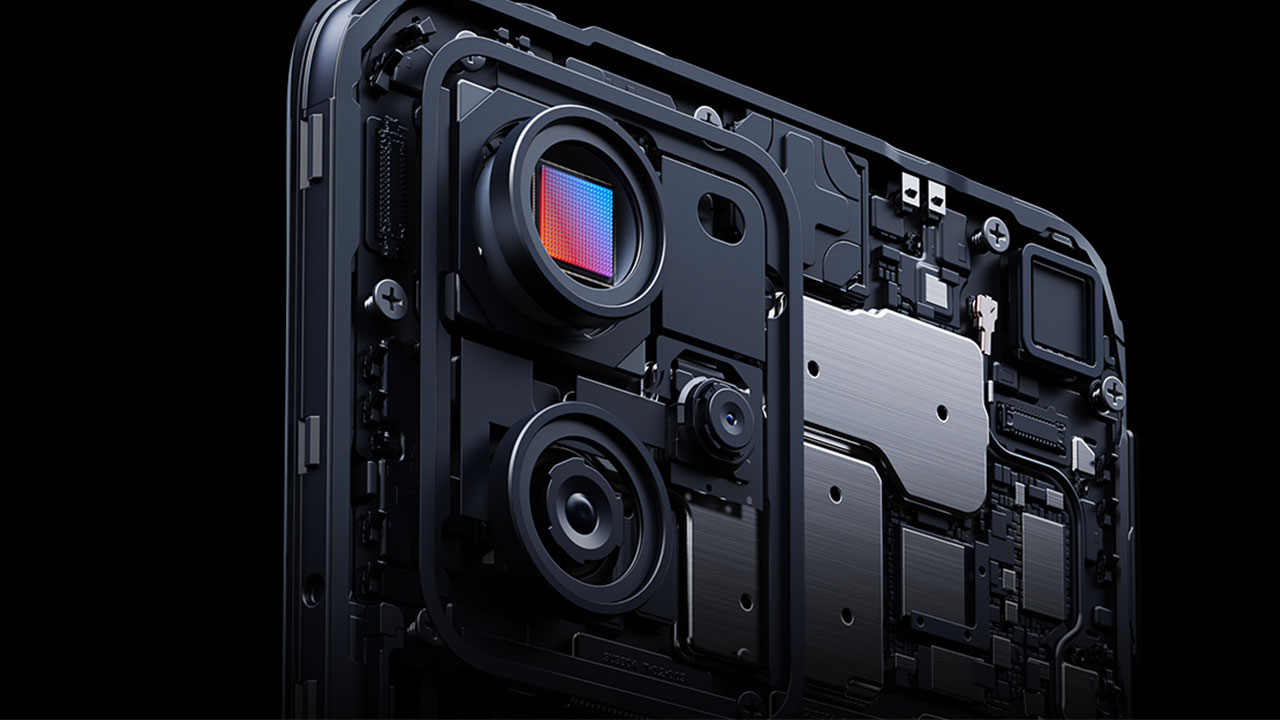In accordance with the brand’s slogan, Dare to Leap, realme continues to present high-quality, trendsetting technological and design innovations to young people in Indonesia. Number Series which will be launched on February 16th, realme continues to explore the user experience in taking amazing pictures.
Yes! realme will soon introduce the realme 9 Pro+ which has flagship camera support in the middle price segment, IDR 4 million. A little flashback to the history of realme’s Number Series. In realme 8 Pro, realme imagines how realme should make a main camera with high resolution.
In the end, realme at realme Indonesia recorded a record in Muri as the “Largest Smartphone Photo Print” thanks to the 108MP camera. It is proven that the photos produced by realme 8 Pro if printed in large size will not reduce photo details.
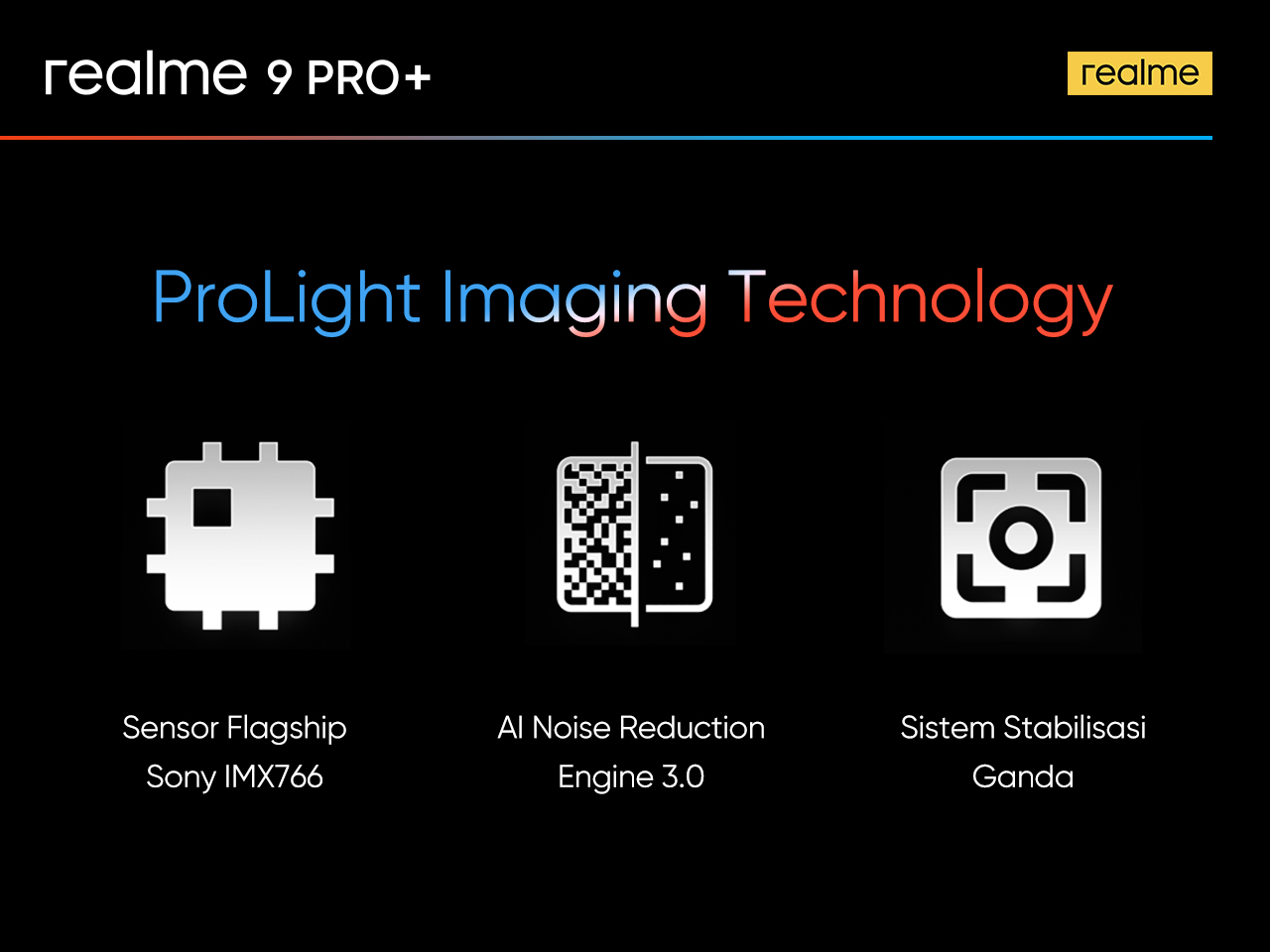
When the realme camera technician team got together to design the main camera on the realme 9 Pro+, the main question that arose was, what if the smartphone camera could capture low-light photos, aka low-light environments, very well?
With this in mind, realme is very enthusiastic to introduce new imaging technology on the main camera that is superior to other smartphones in its class. realme calls it ProLight Imaging Technology.
ProLight Imaging Technology on realme 9 Pro+
The realme camera engineering team has identified some common factors that can affect the noise level and clarity of your photos when taking low-light photos. They are all tiny camera sensors, lighting conditions, and shakes.
To enable you to take good photos in all situations, especially in low light conditions, realme’s ProLight Imaging Technology can overcome these challenges. The trick is to pair the large image sensor with a smart digital noise reduction algorithm and dual stabilization system.
Sony IMX766 . sensor
Let’s start with the image sensor. Sony IMX766 is a popular camera sensor used in flagship smartphones which usually cost more than IDR 8 million, but realme brings it to the smartphone in the middle price segment, which is IDR 4 million.
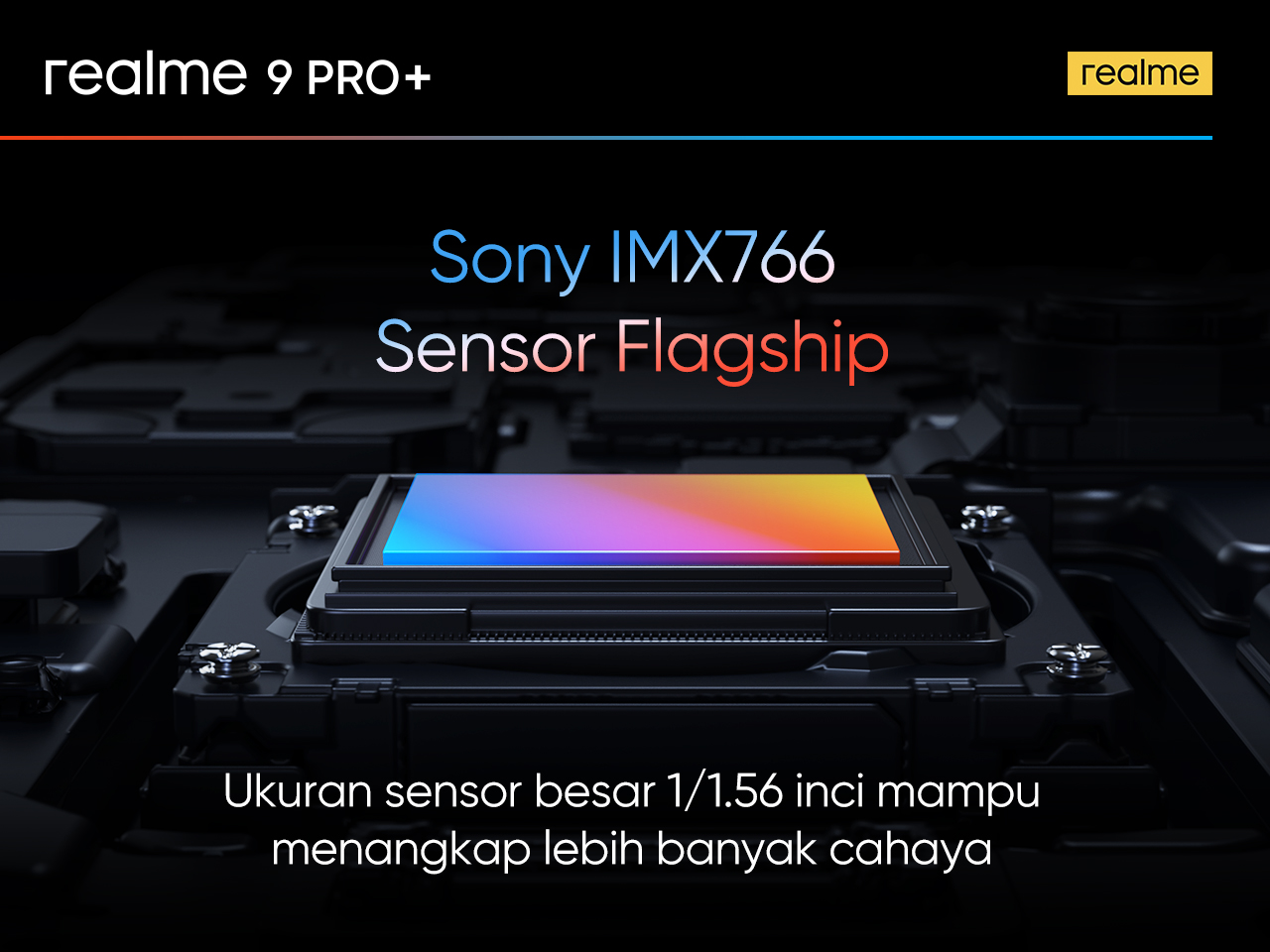
realme notes that there are 15 other flagship smartphones that use this sensor. The Sony IMX766’s 1/1.56-inch image sensor makes it one of the largest in its class. The advantage of this large sensor in taking low-light photos is that it can capture more light even in dark conditions.
Compared to the iPhone 13, this flagship class sensor is able to capture 45% more light intake. As a result, the realme 9 Pro + smartphone equipped with the Sony IMX766 sensor can create low-light or night photos that look so perfect.
OIS+EIS Support
Image sensors generally take more time to capture light in low-light photography to sharpen details. The stability of the user’s hand is usually not very good when the sensor takes time to capture light, so it is easy to produce blurry images.
As part of ProLight Imaging Technology, the main camera of realme 9 Pro+ is equipped with Optical Image Stabilization (OIS) to help stabilize the camera when taking photos and Electronic Image Stabilization (EIS) when recording videos.
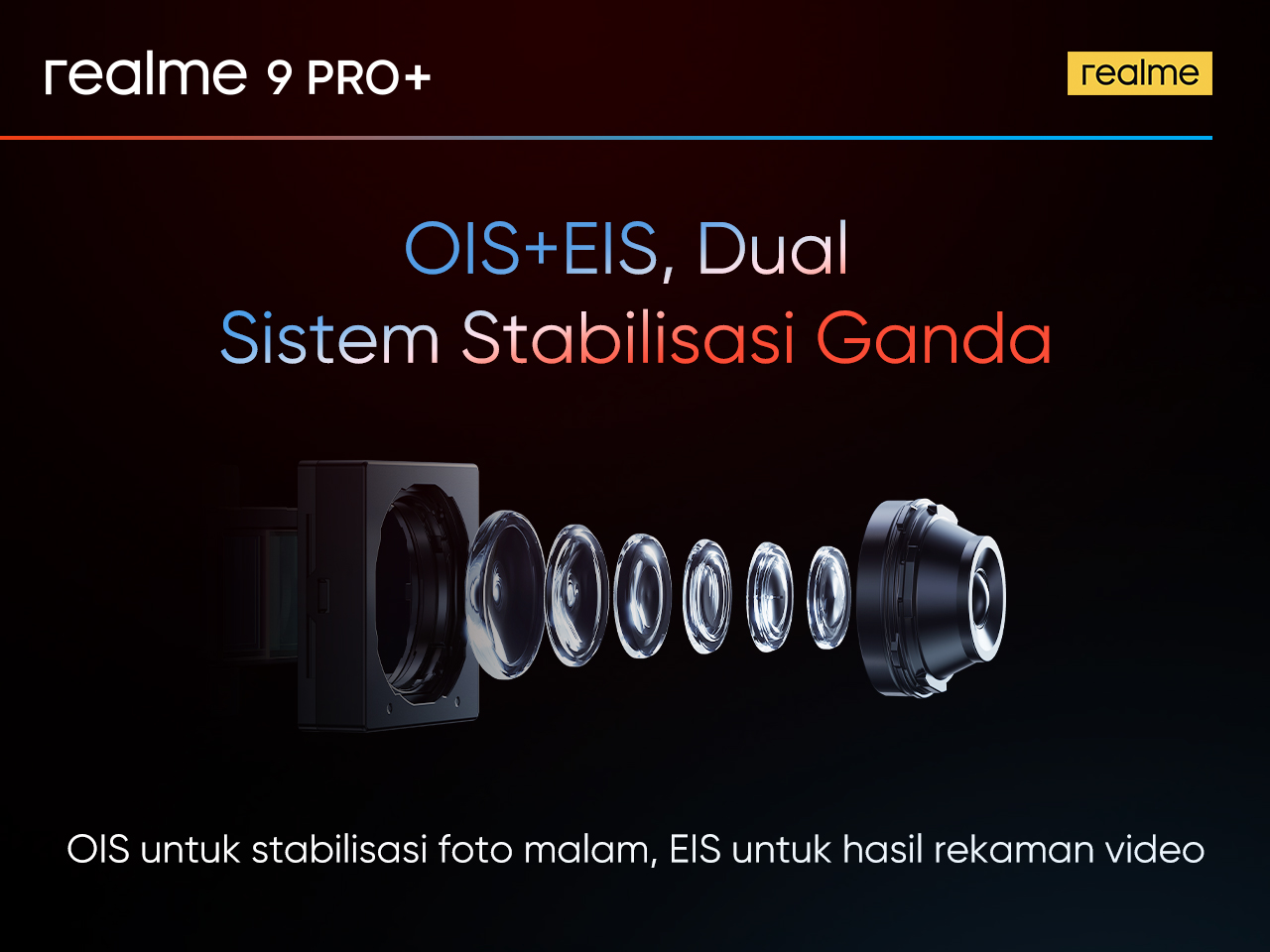
With OIS, the main camera lens can compensate for unwanted movement. In the end, it is able to produce photos that are not only clear, but also sharp. Of course, this is good news for those who are in the field of mobile photography
The following is an example of a photo taken with OIS and without OIS, after realme did a 2x zoom.

AI Noise Reduction Engine 3.0
On smartphones, there are limitations to accommodate large sensors. So, realme makes use of computational photography to further enhance the sensor’s ability to reduce noise levels in images. realmei ProLight Imaging Technology is integrated with AI Noise Reduction Engine 3.0.
Here, realme explains how the AI Noise Reduction Engine works. When you press the shutter button, the realme 9 Pro+ will take several photos at once. The AI Noise Reduction Engine uses an image averaging algorithm to spot differences, and digitally remove as much noise as possible.
However, because digital noise comes in many shapes and sizes, noise reduction engines use deep learning methods to identify and eliminate these forms. This allows you to deliver beautiful, clear low-light photos with far less digital noise.
Here is an example of a photo where the AI Noise Reduction Engine plays a role in producing a dark image with minimal noise.
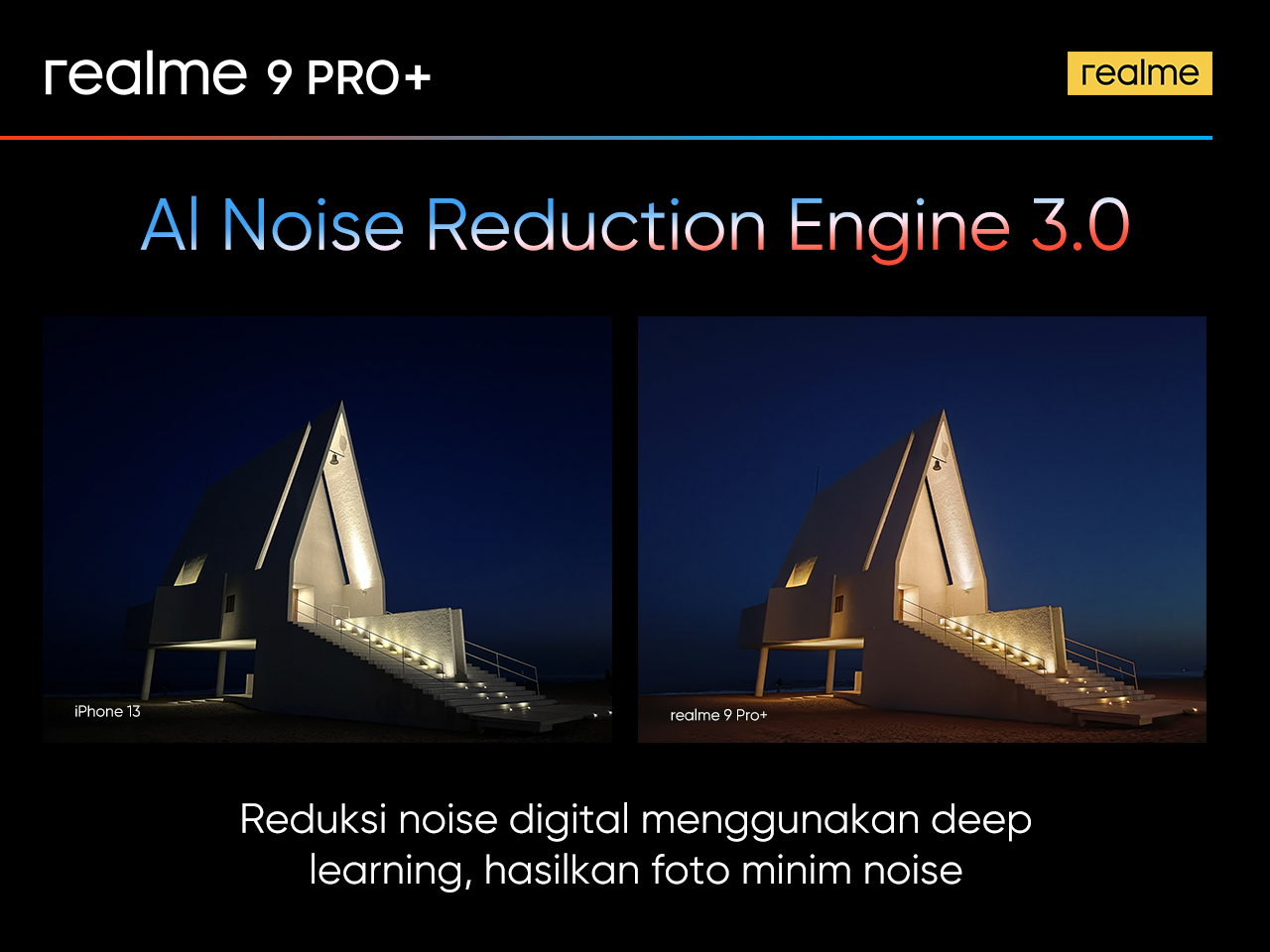
This is ProLight Imaging Technology that strengthens the main camera of the realme 9 Pro+, the flagship camera in the mid-range segment. Now you can capture every moment beautifully, in any lighting conditions. realme 9 Pro+ has rewritten the history of realme’s Number Series in terms of cameras.
Powered by the new ProLight Imaging Technology, the realme 9 Pro+ is able to compete with more expensive flagship smartphones in terms of camera performance in low light conditions. Wait for the launch of the realme 9 Pro Series on February 16 at 15:00 WIB on the official realme Indonesia YouTube channel, or click
